Wordly Wise 3000® Strengthen the Bridge Between Vocabulary and Reading Comprehension
Research-based supplemental reading program provides direct academic vocabulary instruction to help students develop the critical link between vocabulary and reading comprehension, advancing them toward grade-level reading mastery.
- Comprehension & Vocabulary
- Grades K–12
- Tiers 1 & 2
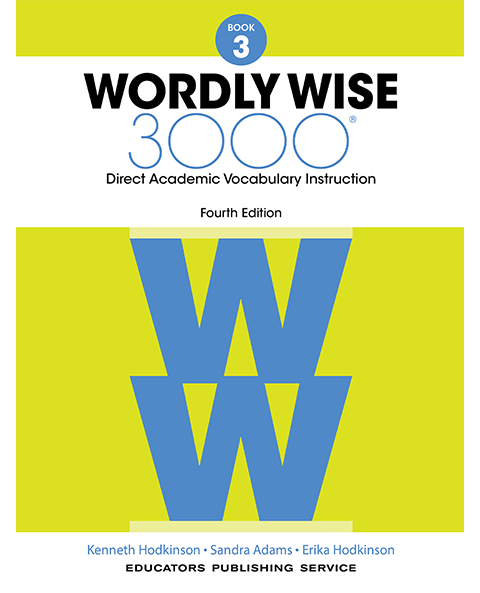

Direct Academic Vocabulary Instruction
Wordly Wise 3000® provides direct academic vocabulary instruction to develop the critical link between vocabulary and reading comprehension. Robust activities, peer sharing, and differentiated instruction meet the needs of today’s varying student populations—empowering students to have successful encounters with grade-level vocabulary.
The words used in this 4th Edition of the print program are commonly encountered in grade-level literature, content-area texts, and state and national assessments. The new formats maintain the word list and rigor of our best-selling vocabulary program.
Wordly Wise Provides Students with the Academic Vocabulary to Succeed in School
Wordly Wise features a variety of components that work together to help students learn 3,000 words most likely to appear in their reading and textbooks, and on state and national assessments.
Student Books
Word List
Each lesson includes a word list with dictionary-style definitions and sentences that present words in context to help students understand the multiple meanings of words.
- Turn-And-Talk Activities: Students are introduced to new words and interact with peers during turn-and-talk activities.
- Academic Words: Key academic words are underlined for easy visibility.
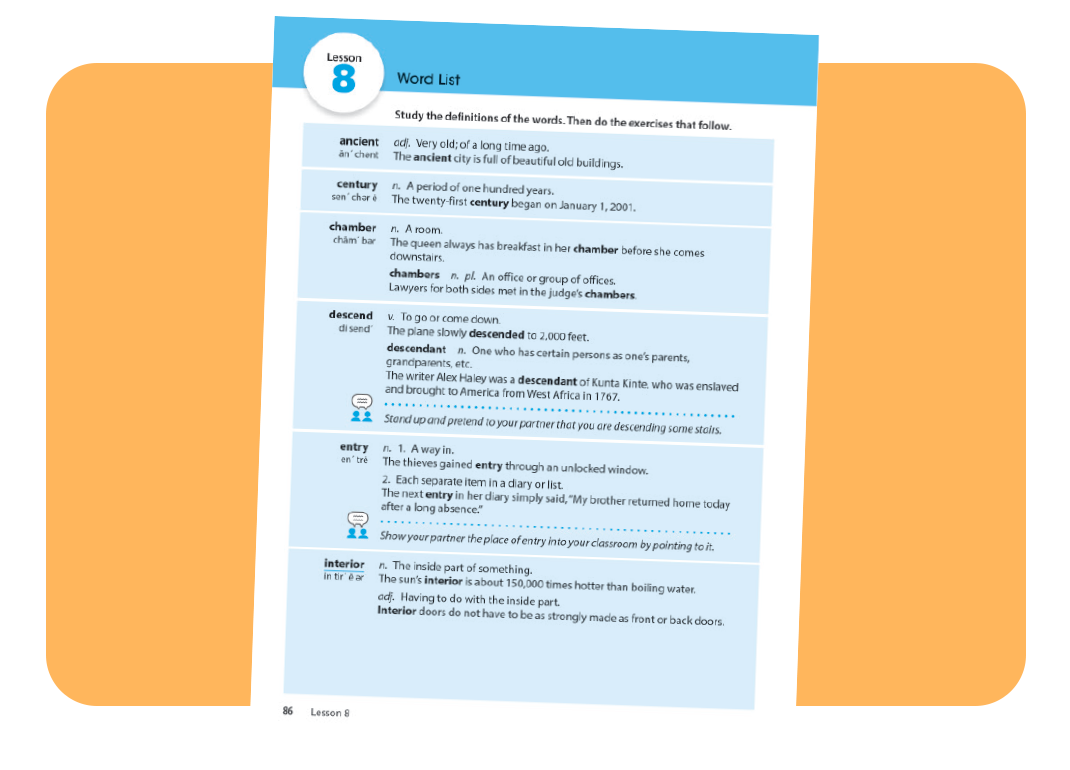
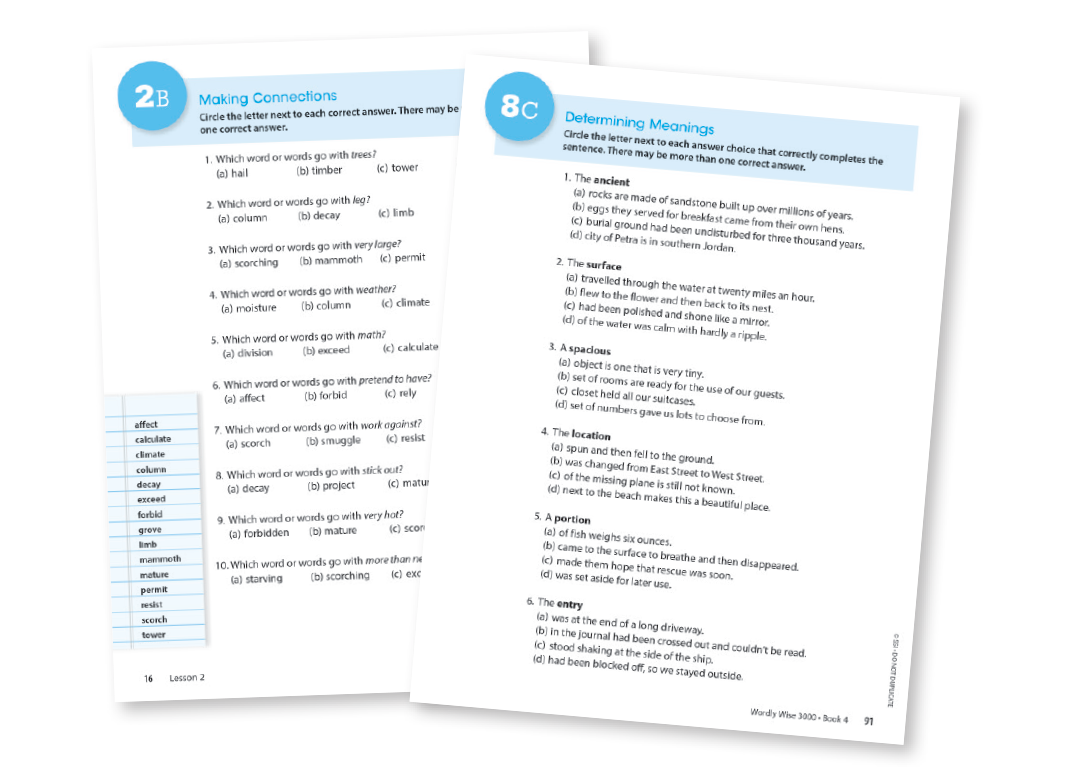
Practice Activities
A wide variety of activities provide multiple exposures and critical practice for a deep understanding of vocabulary words.
- Making Connections Book 4 deeply embeds vocabulary words in students’ memories by requiring them to relate new words with words they already know.
- Determining Meanings Book 4 helps students understand meaningful word parts such as prefixes, roots, and suffixes.
Application Activities
Students interact with their peers and write about their experiences to apply and extend their learning.
Vocabulary Extension Student Book 4 illustrates how application activities work:
- Each Vocabulary Extension word is illustrated to make its meaning more accessible to all students.
- Students engage in meaningful discussions with peers.
- Students complete a brief writing activity.
- Students have space to take notes or draw their own visual representations of words.
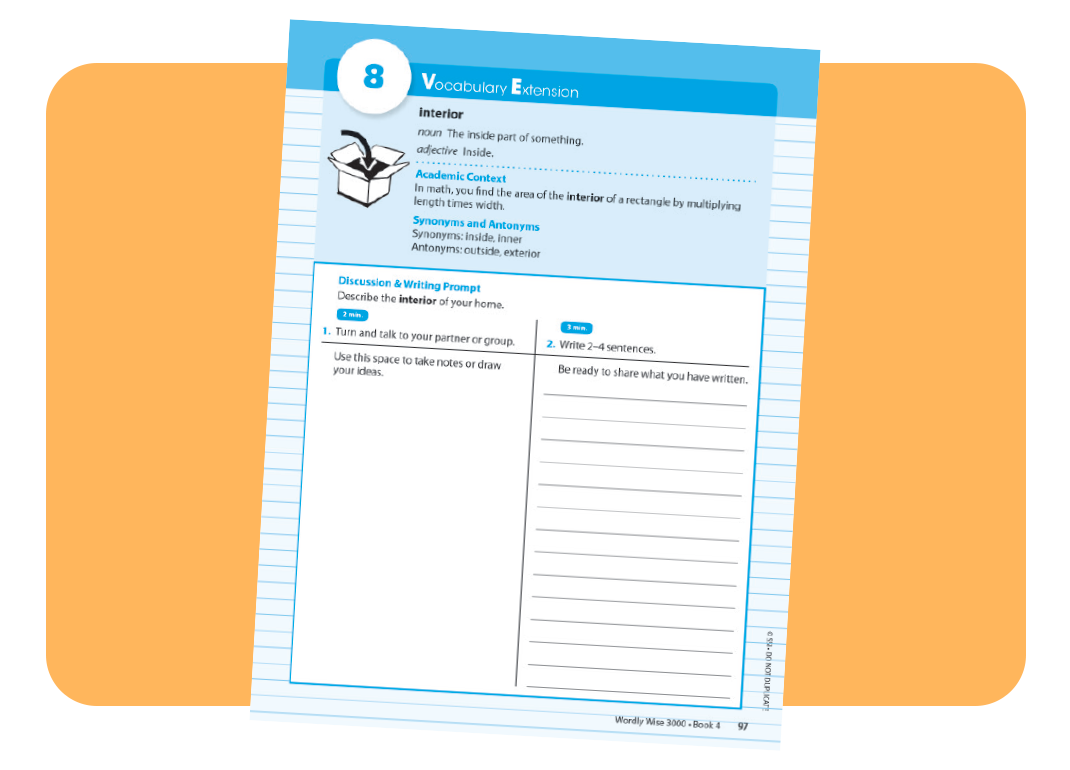
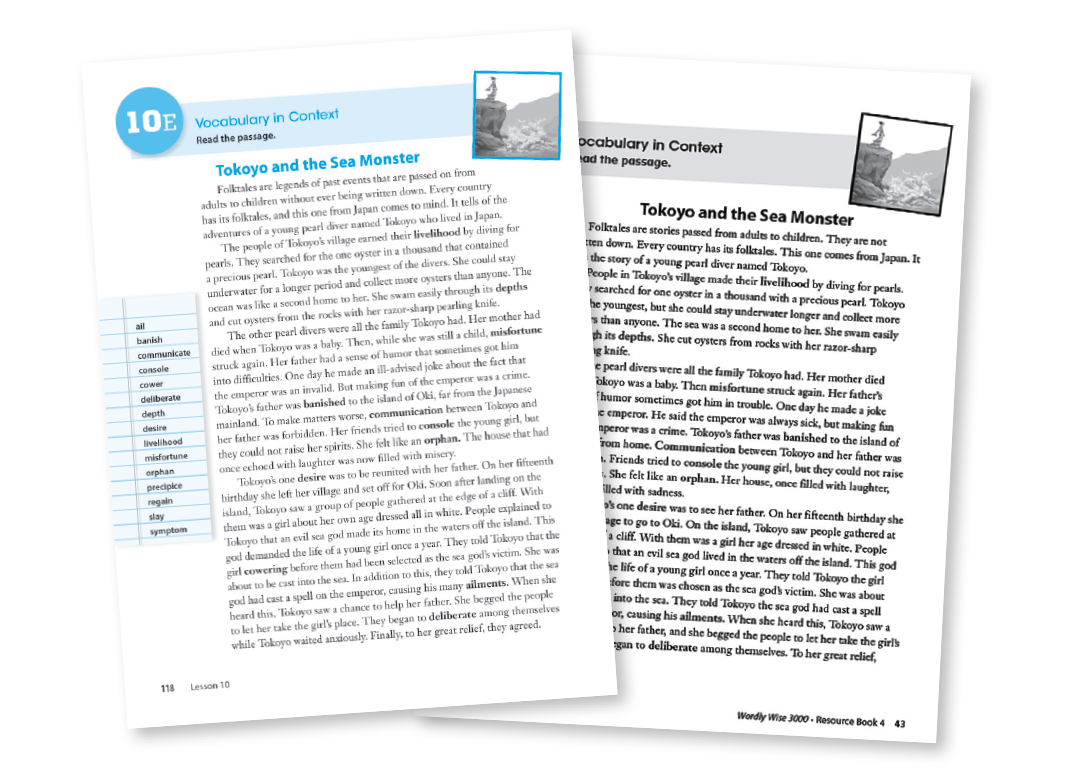
Differentiation
Students read an original passage that incorporates all of the lesson words, then answer comprehension questions to demonstrate their understanding. The reading passage for each lesson is offered at two levels: on grade level and below grade level, written at a lower Lexile® measure.
- Comprehension Questions — Students who use the secondary passage can answer the same open-response questions as peers.
- On-grade-level passage Student Book 4
Teacher’s Resource Books
Books include:
- Teaching techniques for differentiation
- Secondary passages
- Lesson review exercises
- Reproducible tests
- Answer keys
Word Knowledge Awareness Rating
Before each lesson, teachers can have students complete a self-assessment of word knowledge, then review the information to focus on the least familiar words during the introduction of the Word List.
Differentiation
Each vocabulary extension activity comes with a page of suggestions to guide you in differentiation so that every student can benefit.
Assessment
Lesson, Midterm, and Final Tests assess all words, including words with multiple meanings.
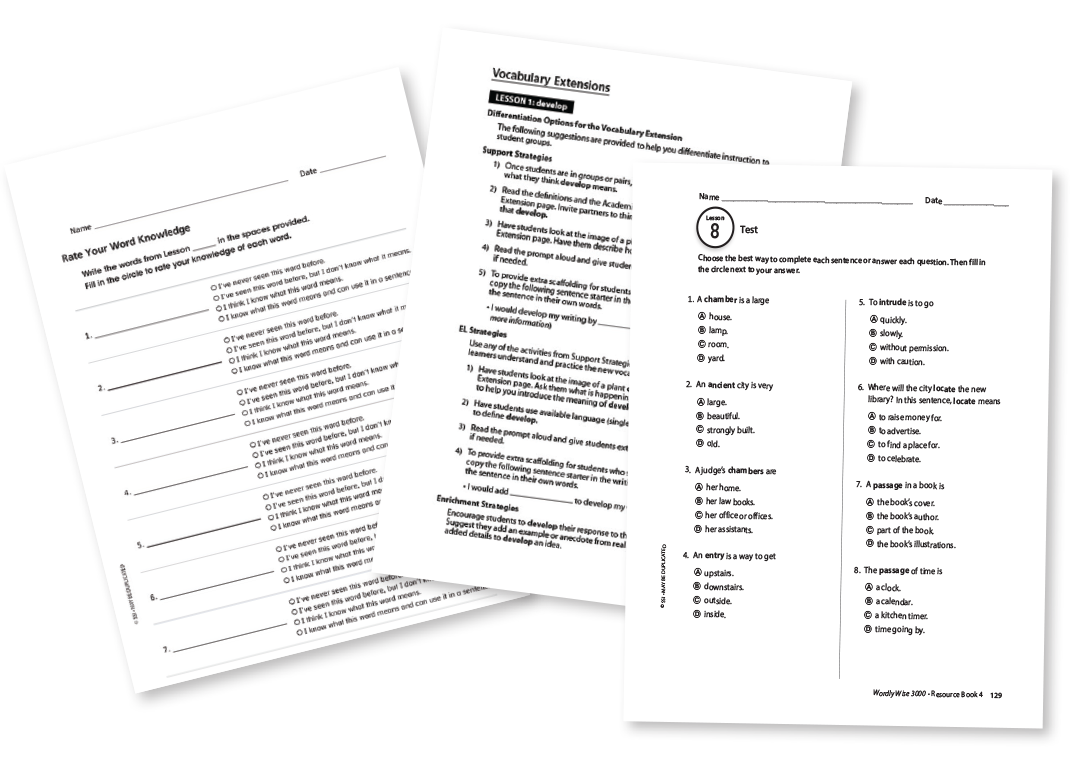
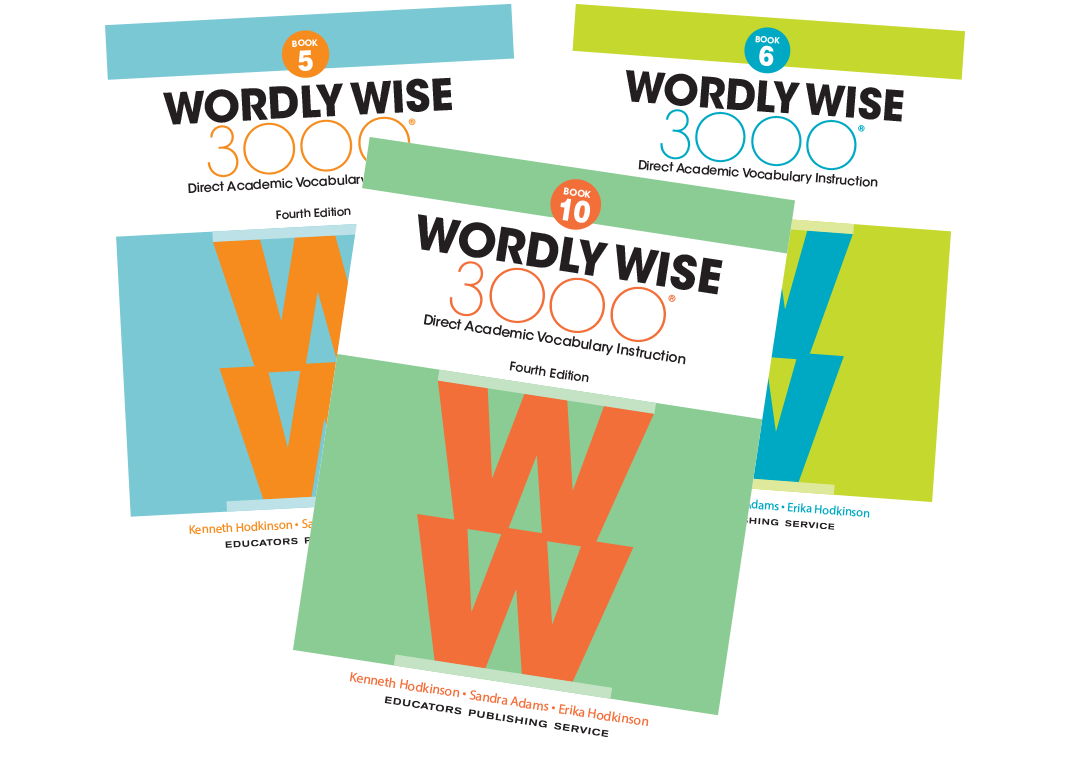
Wordly Wise 3000 Highlights
- Direct academic vocabulary instruction helps students develop the critical link between vocabulary and reading
- Differentiated reading passages help teachers support Lexile levels for on-grade level and below-grade level needs empowering all students to succeed.
- Robust, research-based practice activities that align with current state and national
standards reinforce word meanings and retention. - Peer sharing promotes student engagement.
- Assessments and reporting provide on-going visibility into student performance.
Resources
Program Overviews
Research
Sample Lessons
SPECIAL OFFER DETAILS: Classroom Sets and Classroom Refill Sets do not have to be the same level. There is no limit to the number of Classroom Sets or Classroom Refill Sets that can be purchased and redeemed with this offer. Free Set must be of equal or lesser value. Special Offer is for the Wordly Wise 4th Edition print program only and cannot be combined with any other offers or applied to previous orders. Shipping fees applied prior to promotion and apply to all sent items. Distributors and accounts outside the US are not eligible for this promotion. Must use promo code 25WWB3G1. Offer expires 8/31/25.



